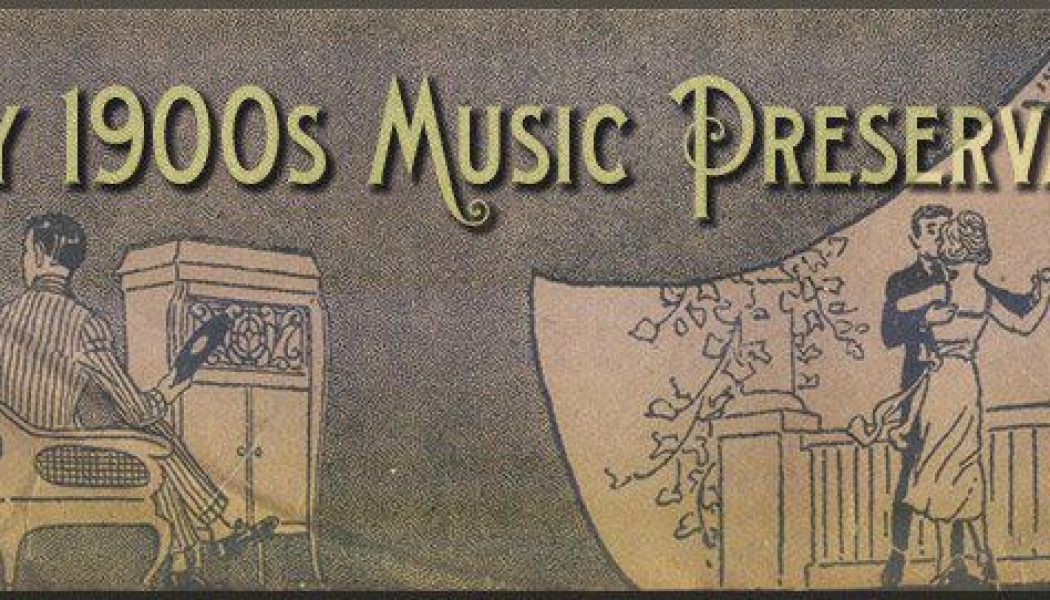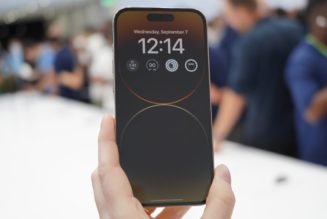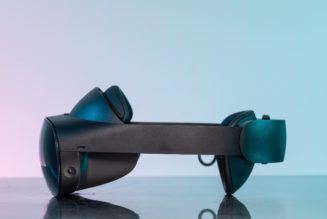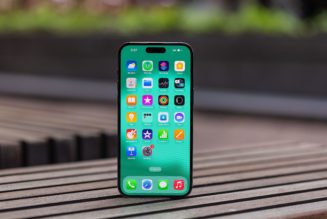No matter what you do during your waking hours — work at home or outside of it; commute in a car, a train, or by walking from your bedroom to your living room; or spend your days watching the kids or job hunting — you’re probably spending at least some of that time listening to music. But where do you find that music? And if you already have a site you go to regularly, would you like to try something new?
There is a wealth of streaming music services now available to anyone who wants to listen and experiment. Some offer both free and paid subscription versions. Others are completely free.
We asked the staff of The Verge to tell us about their favorite music streaming services. Some listen to major outlets such as Apple Music, Spotify, or YouTube Music, while others have discovered lesser-known but interesting venues.
Here’s what they recommend.
:no_upscale()/cdn.vox-cdn.com/uploads/chorus_asset/file/22433162/e1900mpbanner.jpeg)
For some reason, my partner and I have become addicted to the popular music of the early 20th century, mostly the 1920s and ’30s. Over the past few years, we’ve become happily familiar with the sounds of Cliff Edwards, Bessie Smith, Ruth Etting, Annette Hanshaw, Paul Whiteman, Cab Calloway, and Ethel Waters. (Here she is, in one of her sadly few motion picture appearances, singing “Birmingham Bertha.”) So we spend a lot of time listening to Radio Dismuke, a little-known streaming service sponsored by Early 1900s Music Preservation, which gives us a constant diet of pop and jazz from the early part of the last century. —Barbara Krasnoff
:no_upscale()/cdn.vox-cdn.com/uploads/chorus_asset/file/22438117/Screen_Shot_2021_04_12_at_10.59.49_AM.png)
Soma fm started life as an actual micropower radio station in San Francisco in 1999 but flipped over to the internet in 2000. It has been one of my go-to audio sources ever since. The site has tons of different genre stations. While working, I bounce between Groove Salad (ambient / downtempo), Secret Agent (think classic Bond meets modern sensibilities), and Drone Zone (very chill). In the early 2000s, Indie Pop Rocks was my secret weapon for finding new bands my friends didn’t know yet. When the holidays come around, Soma’s holiday stations will make your party twice as festive and half as corny. There are apps for it on all platforms, but if you’re using TuneIn for terrestrial radio, Soma’s stations are listed there, too. It’s all free, but if you use it a lot, find a way to chip in a bit — after more than 20 years of streaming, Soma deserves it. —Dieter Bohn
:no_upscale()/cdn.vox-cdn.com/uploads/chorus_asset/file/22433269/Screen_Shot_2021_04_09_at_4.08.05_PM.png)
Most of my time on YouTube isn’t spent watching videos; it’s listening to music. YouTube Music is everything I wanted out of Google Play Music, plus some. Its catalog of music is incomparable, mostly thanks to users who upload music that otherwise isn’t available on streaming services. It has recent hits and full albums if you want to use it like, say, Spotify, but it’s my destination for listening to uploads of older music or obscure tunes, live performances, and compilations of video game soundtracks. (For some reason, I know the Ghost Trick original soundtrack by heart, yet I haven’t played much of the game.) I’m always a little concerned that my favorite playlist or an upload of a hard-to-find album will be delisted, but perhaps it’s that rush that keeps me listening to it more often than any other music streaming service these days. —Cameron Faulkner
:no_upscale()/cdn.vox-cdn.com/uploads/chorus_asset/file/22437975/Screen_Shot_2021_04_12_at_10.16.33_AM.png)
I’ll confess that I don’t listen to 8tracks regularly these days, but using it is a predictable way to trigger a burst of nostalgia. The streaming service launched in 2008, and it lets users upload playlists of at least eight songs (aka 8 tracks). You can search through playlists based on their tags (which could include artists, genre, or “mood”), but you can’t see the list of songs ahead of time. They’re revealed as you listen. You also only get three skips per playlist per hour. The forced discovery helped me find songs and artists I never would have listened to. 8tracks shut down in December 2019 but was brought back to life by a new startup called BackBeat last April. All of the playlists I made in high school are still intact, but they are very embarrassing — so I’m keeping that username a secret. —Nicole Wetsman
:no_upscale()/cdn.vox-cdn.com/uploads/chorus_asset/file/22438001/kexp_logo_official_notmutant_bw.jpg__344x459_q85_crop_subject_location_172_229_subsampling_2_upscale.jpg)
KEXP, a public radio station based in Seattle, is my favorite radio station in the world. It primarily plays alternative and indie rock, but there are also weekly blocks with completely different genres like blues, Latin music, songs entirely by Pacific Northwest-based artists, and my wife and I especially enjoy reggae on Saturday mornings. We regularly stream the station to our kitchen speaker while eating dinner or doing chores. The music selection is consistently excellent, and it’s also a regular reminder of the city where we met and fell in love. —Jay Peters
:no_upscale()/cdn.vox-cdn.com/uploads/chorus_asset/file/22438023/Screen_Shot_2021_04_12_at_10.33.17_AM.png)
As The Verge’s resident Post Malone fan, I recently discovered Aux Live when a recording of his performance at PostyFest in 2019 was featured. My first intention was to only keep the subscription long enough to watch that one concert, but I ended up really enjoying the service. Aux Live is a music-focused service with a range of live concerts and documentaries across an expansive range of genres and legendary artists. It works both in-browser and via app. It costs $4.99 a month, but that feels reasonable given the vast number of artists featured in the service. —Kaitlin Hatton
:no_upscale()/cdn.vox-cdn.com/uploads/chorus_asset/file/22438338/qobuz.png)
After purchasing a portable DAC to listen to higher-resolution music on my phone, I was looking for a place where I can actually listen to higher-resolution music. I found Qobuz, which allows you to stream songs with up to a 192kHz sampling rate and 24-bit depth. You’re also able to buy hi-res songs or albums and download them from the Qobuz store without having to subscribe to the service. Revisiting some of my favorite albums that I listened to during my iPod days gave me a newfound appreciation for those recordings, and I ended up paying closer attention to the way they were mixed and mastered. —Andru Marino
:no_upscale()/cdn.vox-cdn.com/uploads/chorus_asset/file/22438732/Screen_Shot_2021_04_12_at_2.18.23_PM.png)
Okay, fine — I’ll be the boring member of staff who recommends Spotify. Yes, other streaming services might offer better audio quality or curation, but Spotify has a nice user interface and compatibility with almost every piece of streaming hardware on the market, and that’s really all my basic music tastes require. And soon, with Spotify HiFi launching later this year, audio quality will receive a big boost. It helps that I’ve been using Spotify for close to a decade at this point, so it has near-limitless data on me to create custom playlists tailored to my tastes. Its daily mixes are far from perfect, but they’re good enough that I regularly use them when I can’t be bothered to pick a specific band to listen to. —Jon Porter
:no_upscale()/cdn.vox-cdn.com/uploads/chorus_asset/file/22438806/Screen_Shot_2021_04_12_at_2.38.40_PM.png)
I use Apple Music for a very specific reason: because it lets me listen to music that’s not on Apple Music. Let me explain. A solid 10–15 percent of the music I listen to isn’t on Spotify or any streaming service. Whether it’s something I made or one of my friends made, a rip from a long-forgotten song posted to YouTube or SoundCloud, an album that’s too copyright-infringement-astic to be allowed on streaming services, or just music that’s on Bandcamp but not streaming services, I still want to have a good way of syncing all of the music I like across devices — and Apple Music does a great job of that. I just drag something into the application formerly known as iTunes, and in a few moments, it shows up on my iPhone, syncs to my iPod, and can even be played through my HomePods. I’d write more about how much I love this one aspect of Apple Music, but honestly, I’m starting to sound like an annoying hipster, even to myself. —Mitchell Clark
:no_upscale()/cdn.vox-cdn.com/uploads/chorus_asset/file/22438823/Screen_Shot_2021_04_12_at_2.40.42_PM.png)
Did you know you can listen to over 200,000 concerts in lossless audio quality for free? And I really do mean free. The Live Music Archive, part of the Internet Archive, hosts an enormous vault of live performances from a wide range of artists who’ve given their blessing to have concerts traded among fans. Yes, there’s a ton of material from the Grateful Dead and jam bands in there, but the LMA also contains hundreds of recordings from acts like the Drive-By Truckers, John Mayer, Elliott Smith, Smashing Pumpkins, and more. Every so often, I’ll start digging through the archive and land on a gem I hadn’t heard before. Most are audience-recorded shows, as commercial releases (understandably) aren’t allowed.
Now, the Internet Archive isn’t exactly known for intuitive navigation, and the Live Music Archive site can be very kludgy to use. Thankfully, there are apps like this one for iPhone or this for Android that serve as easier-to-browse portals for everything inside the Live Music Archive, complete with features like offline downloads. —Chris Welch










